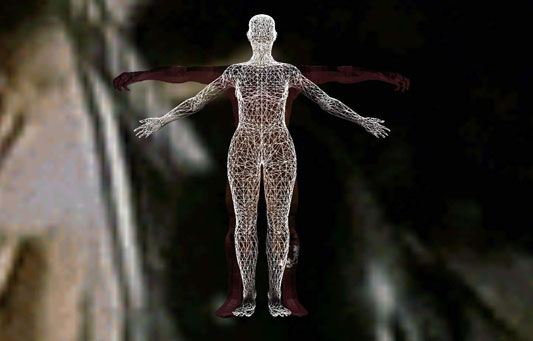montsearbelojosebafranco.net | Español
HUMAN ALL RIGHTS RESERVED
|
|||||||||||
|
-------------------------------------------------------------
Text: ------------------------------------------------------------- - José Ramón Alcalá. Director MIDE. Spain ------------------------------------------------------------- - Montse Arbelo and Joseba Franco ------------------------------------------------------------- |
HUMAN ALL RIGHTS RESERVED Director of International Museum of Eletrography. [MIDE]. José Ramón Alcalá HUMAN ALL RIGTHS RESERVED:
is a project of exemplary nature. It is linked with our current
concerns, and does so narratively, in a manner which interests and
refreshes us. The way we perceive ourselves and how do we project that
personal, subjective, exclusive vision in a modern, renewed way. For those of the Grupo de Investigación en Arte Electrónico (Group of
Research on Electronic Art) at the MIDE in Cuenca, it has been a real
challenge to their technical and creative skills. The first time we
met, both sides thought we could simply collaborate with the editing
and visual postproduction of the final piece, but as we discussed the
project in the following reunions with the assembled members of the
team, new tools, new points of view were appeared, which had to be
implemented in a way that meant an exercise on recycling our previous
work. But Montse and Joseba's limitless creative ambition led them to a further leap when they knew of our interest in remote digital sensorization through the Motion Capture system we had already implemented in the last EC-funded project developed by the MIDE, thanks to the talent and technical skill of our Czech and French partners. They went to Marseille without second thoughts, accompanied by some members of the Cuenca Lab, where they were expected by our colleagues of the European project. Again, as it would be expected, they became enraptured by the techno-expressive potential of the system. It was a creative-and also quite human- case of love at first sight, and allowed Human to grow a bit more. I would like to compare it with a rolling snowball on a slope, mostly due to its exemplary metaphoric capability related to the current dynamics of artistic creation. The Human project is a step further towards the construction and formalization of what until recently was no more than theoretical conjectures and speculation about how we will depict ourselves when we really have the knowledge of what does exactly mean to be digital and how will be the world that those metaphorical approximations will propose us as something materially habitable (or should I have employed the reductionistic term "mentally habitable"?) Without
doubt, Human: All Rights Reserved is a complex and subtle project and,
above all, is a feast for the senses, but that is something for the
public and the specialized critics to evaluate when the time comes;
that is the reason I have used this literary space so kindly offered by
Montse and Joseba to discuss those internal, pre-formalization features
of the work that could be unknown to the public, but which, in my
humble opinion, deserve publicity, because they have been essential in
the MIDE historical evolution and they will be marked out in the
short-although almost fifteen years long- personal and institutional
history. Writer: Jose Ramón Alcalá. Director of MIDE. International Museum of Eletrography of Cuenca . Spain |
